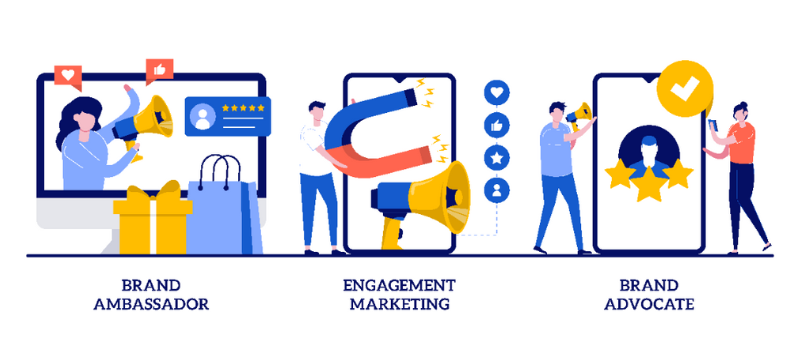Employer branding strategies to attract top talent
Companies often invest a great deal of time and money in creating a corporate brand. This public image helps the organization attract customers by carving out a niche within the crowded global marketplace. Consumers develop impressions of not only what the business brings to the table in terms of products and services, but also company values and mission.
When it comes to attracting potential employees, however, businesses need more than just a strong corporate brand. Job seekers may first become aware of a company through its reputation for innovative products or reliable customer service, but top talent desires more. Aspiring new hires want an answer to the question “Why should I work for you?”
Enter the concept of employer branding. Your employer brand is how you are viewed as an employer. It is your company’s reputation among the workforce — potential candidates, existing employees, and former workers.
A strong employer brand can help land new talent. Especially in times of low unemployment, a great employer brand can provide a much-needed edge for talent acquisition. Standing out can lead to more responses to job postings and more job candidates accepting an offer when made. The best talent may even seek you out, thus reducing the time and money spent on recruitment marketing.
Beefing up your employer brand also improves retention of current employees. Measures taken to improve the work environment to attract new employees likewise boost the satisfaction level of existing team members. They want to stay, and you eliminate the need to fill so many open positions.
Realize, though, that getting others excited about your employer brand takes effort. Effective employer brands are carefully crafted and managed, not tossed together and left unattended. Here, we look at employer branding strategies that can assist with establishing a desirable employer reputation.
Look at your hiring goals
Successful companies hold visions of what they want to achieve, and they know the importance of human capital in meeting those goals. To that end, they engage in strategic workforce planning in order to figure out current and future staffing needs. Employer branding should support those plans.
Leaders and other stakeholders must ponder the question “Who do we need to bring aboard in order to reach our corporate goals, and how do we land this talent?” The answers will guide how and where you market yourself.
Create a target candidate persona
Some companies find it helpful to envision their ideal candidates. By understanding who they want to attract, employers can deliver a message that resonates with the appropriate audience.
Things often pinpointed in a target candidate persona include the ideal new hire’s:
-
Education level
-
Past experience
-
Location
-
Salary requirements
-
Career and life goals
-
Job search behavior (active, passive)
-
Preferred job search channels (social media, job boards, friend referrals, etc.)
-
Motivation to take a new job (perks, advancement opportunities, professional development, commitment to mission, outstanding company culture, etc.)
-
Personality traits
-
Sources of influence and trust (LinkedIn connections, family, friends, review sites, etc.)
How does this information help? When you know the type of job candidate you want and pair that with knowledge of what that ideal individual wants, a mutually beneficial connection takes shape. You can figure out where to devote resources, such as the placement of targeted ads. You can better tailor your message, such as focusing on work-life balance. You can speak in ways in which they will listen, such as by talking about social responsibility on your website.
Examine your current employer brand
When thinking about employer branding strategies, it pays to cast a critical eye on where things stand. Even if you are not actively promoting an employer brand, you have one (for better or worse).
Get to know the reputation you currently possess among the workforce. Look at Glassdoor and other review sites. Google your company with a phrase such as “What’s it like to work for (your organization’s name)?” Pay attention to social media. You will collect valuable information about the candidate experience, the feelings of current employees, and the thoughts of former workers.
Armed with this knowledge, you can make adjustments. While nobody likes to hear criticism, let any harsh words spur reflection and action. Do not ignore what is being said. Feedback enables figuring out how the company can change its behavior or procedures to rectify stated problems or perceptions.
Craft an employee value proposition (EVP)
A major part of an employer branding strategy is developing a consistent message. By doing so, prospective employees and current ones understand who you are and what you offer.
Organizations often find it helpful to construct an employee value proposition (EVP). The Society for Human Resource Management defines an EVP as “part of an employer’s branding strategy that represents everything of value that the employer has to offer its employees. Items such as pay, benefits, and career development are common, but employers also highlight offerings that are currently in demand — like technology, remote work, and flexible scheduling.”
As mentioned before, people want to know why they should work at your company instead of somewhere else. What can prospective workers expect from you as an employer in exchange for their talent? An EVP fills them in.
Enlist help from employees
A smart way to generate ideas for the employee value proposition is to seek input from outstanding or long-term employees. Ask them why they like working at your business, how they would describe company culture, and what makes the organization different from other places. Using their responses when forming an EVP gives the proposition authenticity and a worker-focused perspective. And when prospective employees or other stakeholders question them about your employer brand, their answers will align with your message – adding to your credibility.
Their assistance, however, can extend much farther than the EVP. Think of employees as essential brand ambassadors. What they say or do has a huge impact on your employer brand. Why this power? People outside of the company see them as credible insiders. Potential new hires put stock in what they say.
Capitalize on this trust through plenty of “real-world” representation. Feature employee stories, profiles, Q & A, and pictures on your career site and social media platforms. Likewise, encourage team members to share your company culture with their own online and in-person networks. Some might be scared to do so without guidance, so consider offering talking points and easily accessible shareable content such as pictures and videos.
And remember the value of periodic surveys. Confidentially ask employees why they stay, what they tell their friends about your company, and what you could be doing better as an employer. Their answers will influence your future employer branding strategies while also showing areas that could use improvement in the effort to increase employee retention.
Be sure to seek candidate experience feedback from your newest hires.
 Their responses provide information on how well your employer brand strategy is reaching the desired audience.
Their responses provide information on how well your employer brand strategy is reaching the desired audience.
Ask things such as:
-
How did they first hear of your company?
-
What outlets did they use to gain more information about you as an employer?
-
What factors most influenced them to apply?
-
How easy or hard was the hiring process?
-
Who weighed in on their decision to take the job?
-
How closely has their experience so far matched what they expected from you as an employer?
Examine what is going on beyond your own employer brand
In addition to monitoring your own employer brand, pay attention to the employer reputation of your competitors. Understanding how the workforce views them gives insight that can help with your own marketing. For instance, maybe a rival firm receives multiple negative comments about lacking appreciation for its employees. This criticism might lead you to add a section to your careers page that highlights special things you do for workers. It could show celebrations of work anniversaries, talk about Friday afternoon massages once a month, or give shout-outs to employees who have gone above and beyond.
Some companies engage in the practice of social listening to learn more about what prospective employees think and desire. This tool tracks and analyzes relevant online conversations. Insights gained can assist with shaping your employer brand.
Consider, for instance, if social listening picks up on an increased number of discussions about work-life balance in your industry. Prominently mentioning remote options in your job description postings or featuring testimonials from working parents on your careers page could add to your attractiveness as an employer.
Gage success and revise as necessary
Creating an employer brand is not a one-time endeavor. Rather, the brand is something that can grow and change based on your own hiring goals and the desires of the workforce.
It pays to examine your employer brand on a regular basis. Are your employer branding strategies yielding desired metrics such as an increased number of applicants for each vacancy or a reduced cost per hire? If not, you may need to make changes. Test new ideas and measure outcomes. A different target ad or additional emphasis on a certain outlet can make a difference. Large companies may want to reflect on whether geographical differences influence the effectiveness of some of their branding initiatives.
Also, be certain to stay current. Viewers will notice if you have not changed the pictures on your website in years. Likewise, keep up on reviews and comments. Timely responses paint your organization as engaging.
Walk the walk
Finally, keep your employer brand authentic. Temptations exist to lie (or stretch the truth beyond recognition) to gain attention. Do not go there. Disgruntled former employees will talk or post reviews to set the record straight. Job candidates will get frustrated when they go through the interview process and find reality does not match expectations. Current employees will shun the role of brand ambassador because they do not want to deliver a dishonest message. Think of employer branding as communicating a way of life, not as a marketing ploy.








